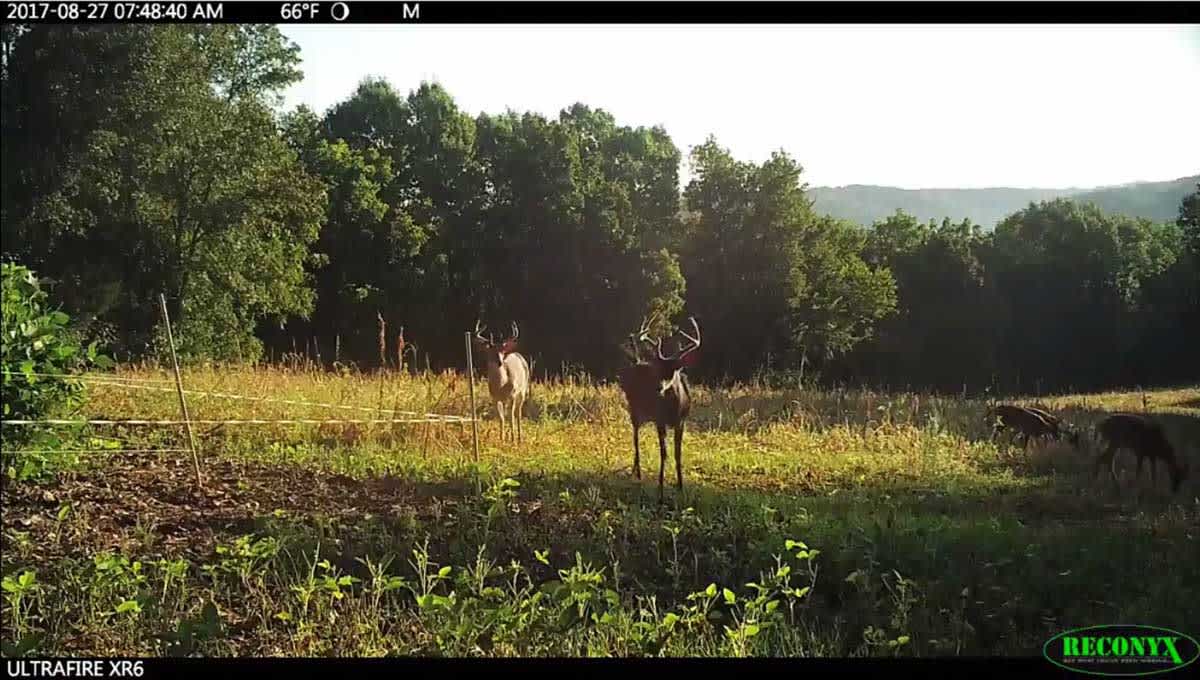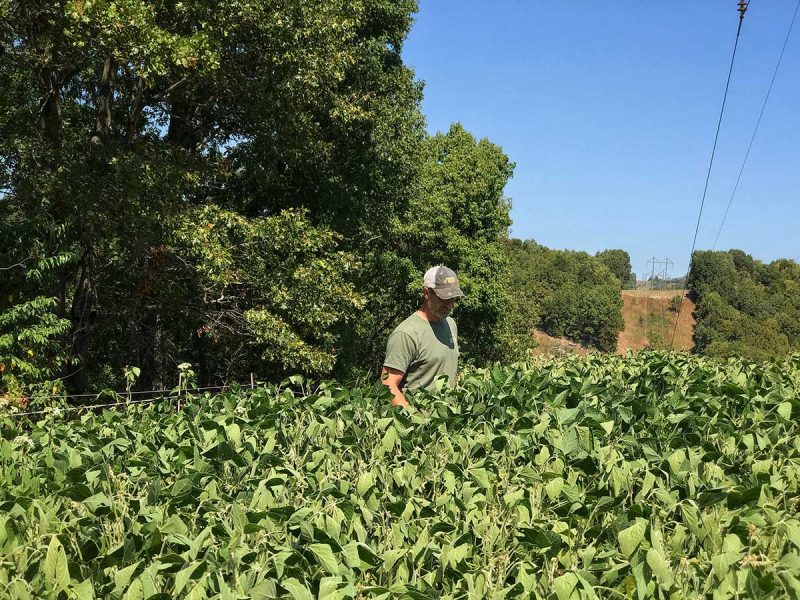Whitetail Wednesday: Creating Food Plot Bottlenecks with Help from an Electric Fence
Grant Woods 09.13.17

I’m envious of my buddies that hunt in areas that are predominately ag fields. It’s generally easy to find naturally occurring bottlenecks in such habitat, and therefore easier to pattern deer. I live and primarily hunt in the Ozark Mountains in southern Missouri. The habitat here is mostly timber with some fescue pasture. In such areas, it can be very difficult to pattern deer.
When acorns are available, whitetails often feed without following a pattern. Through the years, I’ve learned ways to create bottlenecks or limited resources to increase the odds of seeing and tagging deer. One of my best techniques is to establish a plot of soybeans and protect some of the forage with a Hot Zone solar powered electric fence. It works!

The food plots at my place tend to be small. During dry years, deer can browse the beans so much that they won’t produce maximum forage or a full yield of pods. Both soybean forage (leaves) and pods are very attractive to deer. To ensure some of the plot makes a full yield of forage and pods, I use the fence to exclude deer from a portion of the plot.

I can easily remove the fence during the early archery season before acorns fall, or during the late season depending on when I have time to hunt that area. I’ve used this same fence for years, and have learned a few tips.
- I store the fence and solar charger inside when it’s not being used.
- I never put the fence up unless I’m ready to make it hot. Deer will learn to jump the fence if it’s up and not energized.
- I place the outside fence 18 inches above the ground. I place two more hot wires 3 feet toward the crop I wish to protect. One of these is 8 inches and the other is 24 inches above the ground. Different spacing hasn’t resulted in as good of results.
- The most important feature to keep the fence hot is ensuring it’s properly grounded. I sometimes use multiple ground rods.
Whether natural or man-made, bottlenecks can be a key to seeing deer within shooting range.

Enjoy creation!
Editor’s note: Be sure to check out Dr. Grant Woods and his popular on-demand web series that shares current information about deer hunting and deer management. The free videos focus on what the GrowingDeer team of experienced hunters and deer managers are doing in the field week to week, including action-packed hunts, proven hunting strategies, habitat management, food plots, trail camera techniques and the gear it takes to get it all done.

